Language, dialect, group, creole...what do these terms mean?
Each of the more than 700 Aboriginal and Torres Strait Islander languages of this continent has its own characteristics. These individual characteristics allow speakers to distinguish their language/s from those of their neighbours. First Languages Australia recommends using the term 'language' for all language varieties rather than attempting to capture the relationship of one language to another through the use of linguistic terminology. For example, we advise against using linguistic terms such as 'dialect' as these can inaccurately imply simplicity and lower status amongst languages.
This continent and its people are multilingual. Aboriginal and Torres Strait Islander people have always spoken multiple languages, naturally code-switching to use different languages in different contexts and with different people. Across Australia this remains the norm, with people speaking traditional languages, contemporary languages, English and sometimes other foreign languages, depending on what is needed at the time. More information on multilingualism and Aboriginal and Torres Strait Islander people can be found in the introduction to Global Lessons: Indigenous languages and multilingualism in school programs (2018).
Languages are means of communication and are also signposts of identity. Hence, the need to be guided by local language authorities with regard to how their languages should be represented. Please refer to our Notes to assist reporting on Aboriginal and Torres Strait Islander languages (2019) for further information.
Contemporary languages such as Kriol, Aboriginal English and Yumplatok should also be named in their own right. Despite sharing some characteristics with English and other languages, they have their own sound system, distinct structure, grammatical rules, lexicon and social norms. They cannot be spoken by an English speaker who hasn't actually learned the language. For many Aboriginal and Torres Strait Islander people they are the first language learnt as children and they continue to be a primary language throughout life. In addition, these languages each have many distinct varieties as they are based on the traditional languages of the regions in which they developed.
In their book Language and Culture in Aboriginal Australia (1993), non-Indigenous linguists Michael Walsh and Collin Yallop offer some insight into language diversity:
It is difficult to be precise about the numbers of dialects and languages because the information available is often poor and terms like 'dialect' and 'language' can shade into each other. For the English language we can recognise dialects like Australian English, Canadian English, New Zealand English, and so on. The differences between these dialects may not be so great as to interfere with communication. But what of Scots English and Jamaican English? Here the differences may be sufficient to create difficulties in communication – at least in the short term – even though we refer to them as kinds of English. On the other hand, we also recognise forms of speech which are clearly separate languages, such as German and Spanish, Irish and Armenian or Hindi and Greek. Despite their current differences these languages all go back to a single ancestral language spoken thousands of years ago. In Aboriginal Australia there are languages which are clearly distinct, like Tiwi (from Bathurst and Melville Islands, off the north coast of Australia) and Pitjantjatjara (from the desert areas of South Australia and Western Australia). There are also forms of speech which share much the same grammar but differ in pronunciation and vocabulary just as various dialects of English do. Examples of such forms of speech are Gugada, Ngaanyatjarra, Luritja, Pintupi and Pitjantjatjara, which linguists have classified as belonging to the Western Desert Languages This was not a term used by the native speakers themselves any more than a cover term like the 'Scandinavian Language' is used by speakers of closely related forms of speech like Danish and Norwegian. Danes and Norwegians feel that they have a separate language with a separate territory and that their language is a reflection of their group identity. The dialects of the Western Desert Language were spoken over a vast area of well over a million square kilometres in the Northern Territory, South Australia and Western Australia. Not surprisingly there would be difficulties in communication between speakers of dialects which were widely separated.
In his book Words of Wonder: Endangered Languages and What They Tell Us (2022), non-Indigenous linguist Nick Evans provides a linguistic explanation of language diversity in one small area in northern Australia:
I recently drove down the dusty road from Wilyi on the coast near Croker Island, to the inland town of Jabiru, while working with speakers of Iwaidja, the language in which Tim Mamitba had told me the Warramurrungunji story. The 200-kilometer transect follows Warramurrungunji’s path, traveling inland and south- wards from beach through eucalyptus savannah, stretches of tropical wetlands and lily ponds, and occasional sandstone outcrops whose caves hold vast galleries of rock paintings. It is a timeless landscape rich in wild food – magpie geese, fish, bush fruits, and yams. Its Aboriginal inhabitants can live easily through the year, finding all they need on their own clan countries. The few river crossings do not present geographical barriers. But Warramurrungunji’s legacy of linguistic diversity is clearly here. In a few hours on the road we passed through the territories of nine clans and seven languages from four language families, at least as different from each other as Germanic, Slavic, Indo-Aryan and Romance.
To give a rough idea of how different the languages are at the two ends of this transect, consider the useful sentence “you eat fish”. Taking Iwaidja from one end, and Gun-djeihmi from the other, we compare kunyarrun yab and yihngun djenj – of which only the final -n in the two languages, which marks non-past tense in both, is historically relatable. Imagine I had driven from London to Moscow – 15 times as far. The Russian equivalent ty esh rybku, although incomprehensible to English ears, contains three cognate elements, at least if we cheat a bit by taking the earlier English version thou eatest fish: ty (with English thou), e (with English eat) and -sh (with the older English suffix -est in eatest). And if I satisfy myself with a shorter trip to Berlin – still more than five times the Wilyi–Jabiru trip – we get the almost comprehensible du ißt (isst) Fisch, in which every element is cognate.
